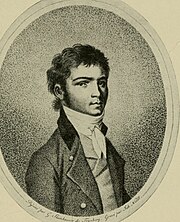History
According to Carl Amenda [ de ], Beethoven's friend, the second movement was inspired by the crypt scene [2] from William Shakespeare's Romeo and Juliet . The quartet was heavily revised between the version that Amenda first received, and that was dedicated to him, and the one that was sent to the publisher a year later, including changing the second movement's marking from Adagio molto to the more specific Adagio affettuoso ed appassionato. Of these modifications, Beethoven wrote: "Be sure not to hand on to anybody your quartet, in which I have made some drastic alterations. For only now have I learnt to write quartets; and this you will notice, I fancy, when you receive them."
The "Amenda" manuscript, as it is sometimes known, was edited by Paul Mies and published by Bärenreiter around 1965, and by G. Henle Verlag of Munich (perhaps also edited by Mies) in 1962. [4] This early version of one of Beethoven's best-known works has been recorded perhaps fewer than a half-dozen times as of July 2014. [5]
This page is based on this
Wikipedia article Text is available under the
CC BY-SA 4.0 license; additional terms may apply.
Images, videos and audio are available under their respective licenses.
